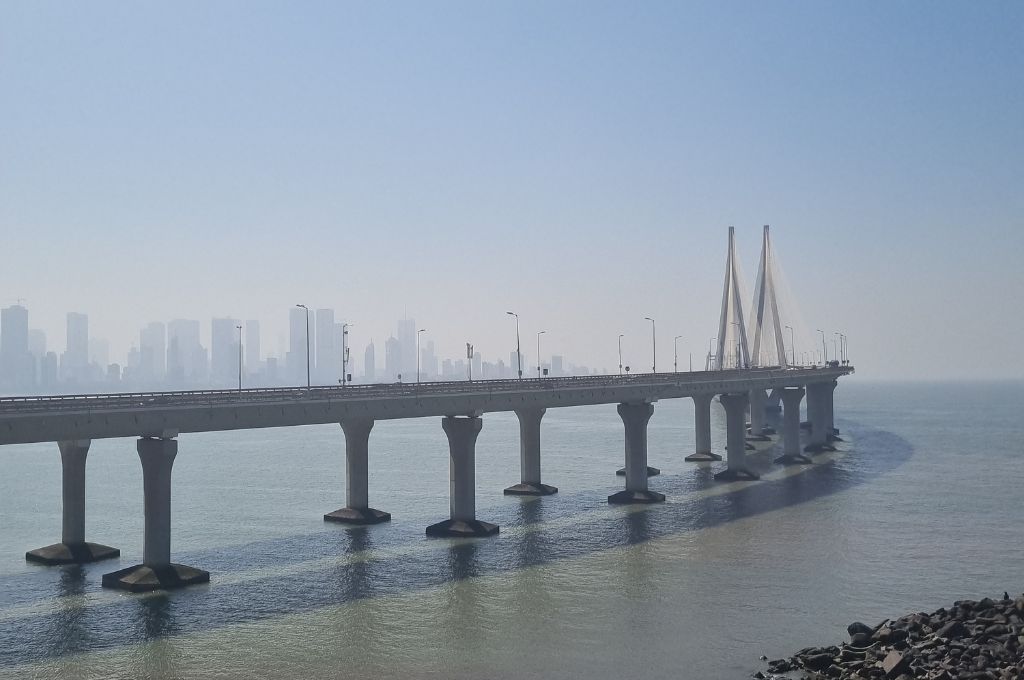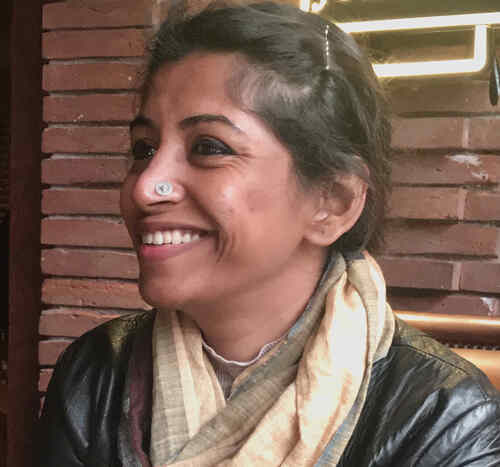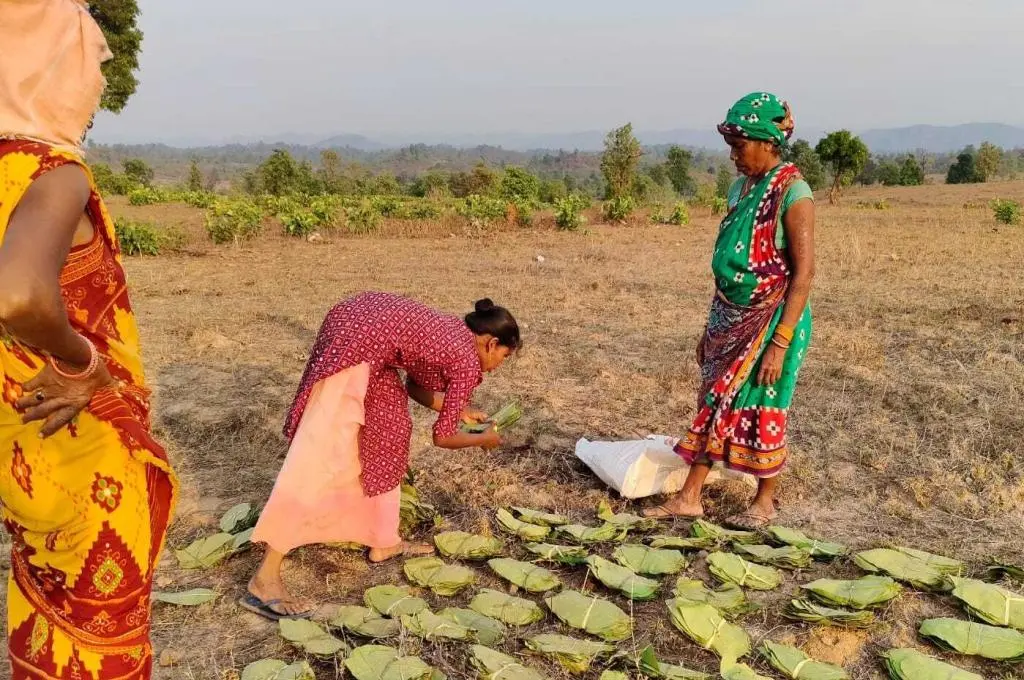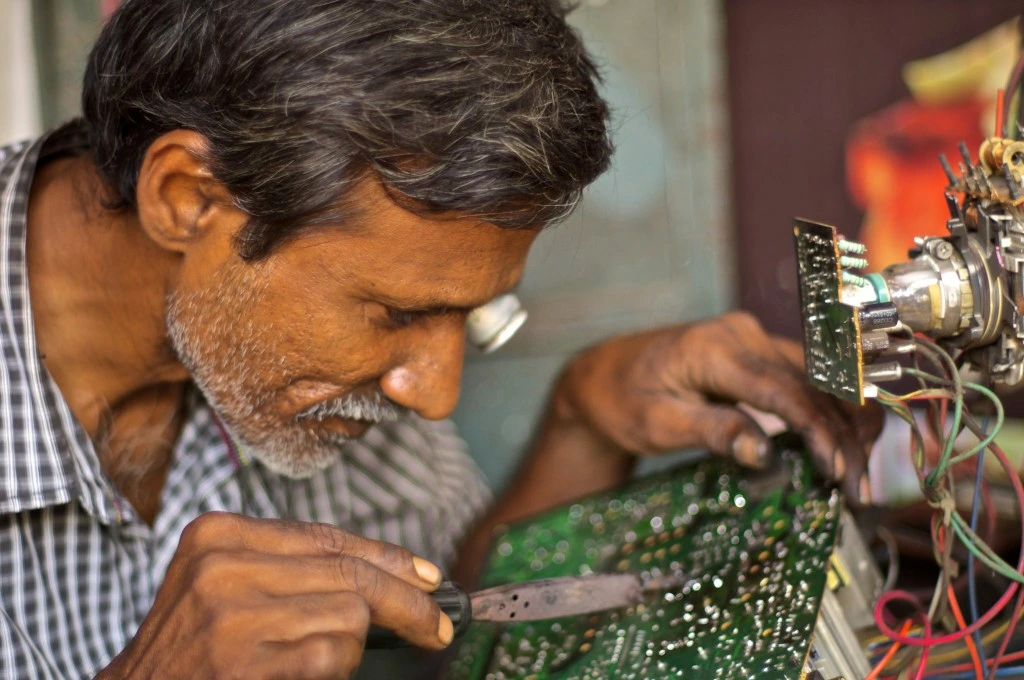Stalin Dayanand is an environmentalist who has spent two decades building citizen movements to protect wetlands and forests in Maharashtra. Environmental litigation, environmental education, and ground-level conservation are the planks of his activities. The director of Vanashakti—a conservation nonprofit in Mumbai—Stalin has been at the forefront of several environmental campaigns. These include the Save Aarey movement, the protest to protect Sindhudurg’s forests from mining, the Save Ulhas River project, and the pushback against constructing an international airport on wetlands in Navi Mumbai.
Stalin spoke to IDR about what it takes to build a people’s movement, why such movements should not be labelled ‘anti-development’, and why litigation is every environmentalist’s last recourse.

Based on your experience of mobilising support for the Save Aarey movement, can you speak about the importance of public participation in environmental movements?
Climate change is not going to be restricted to a select class of people. The rich may get away with whatever resources they have to mitigate its impact, but the poor—who are more in number—will still suffer. Any decision or event related to climate change will have a bearing on the larger public. So it’s important that they—the ones who deal directly with solutions to the issue—be its spokespersons.
But the problem is that there’s no consensus on the solution. Different stakeholders are never at the same table. This disconnect makes it difficult for the global population to move forward in unison to fight the effects of climate change. It is therefore important that every movement has people participating from all walks of society—from different socio-economic strata and with different academic qualifications and means of livelihood.
When the Save Aarey movement began, the criticism levelled at us was that it was ‘an English-speaking people’s movement’. And yet, the first people to break into the Metro car shed site to save the trees were the tribals who said, “This is our forest; you’re not touching it.”
The Save Aarey movement consisted of people from all walks of life. There were doctors, engineers, actors, teachers, homemakers, students, and professors. And standing alongside them were labourers, mathadi workers (head loaders), fishers, Adivasis, students, senior citizens, women’s rights organisations, and, curiously, even the political class.
Aarey was offered as a sacrificial lamb to help builders, and we have the documents to prove it. People understood this, which is why they rallied around the cause. This is why the movement was a success. In a city like Mumbai, where getting 10 square feet of land out of the government’s or builders’ hands is a Herculean task, we managed to secure 830 acres of forest. This is what the citizens who fought for it achieved, and we take pride in it. We couldn’t stop the Metro car shed from being built, but in today’s world, wherever democracy is crumbling, it is difficult for people to win immediately. The government bulldozes every sort of opposition and uses every resource it has—from disinformation to intimidation—to do what it wants.
How did you mobilise wide participation across different strata of society?
When news of the tree felling first came out in 2014, schoolchildren—for whom we conduct environmental education sessions—started asking us about Aarey. We told them that the forest was being cut down and the children said that they wanted to see it before that happened. So we took them there. They climbed trees and hugged them and that was the first protest, the first ‘Chipko’ in Mumbai.
Then it became contagious, spreading to citizens who lived around Aarey. They felt connected with it and understood its value. They were the ones who mobilised more people. The cause eventually became viral, with a protest being organised every Sunday. However, this was not a planned movement at all. We could have never imagined that it would go on for nine years.
For a movement to be successful, it has to be ground up and local.
One of the factors that influenced its success was nostalgia. Many of the protestors in their 40s and 50s had strong childhood memories of Aarey. You always want to retain a part of your childhood, and so you’ll step up to defend those sites. When you come in with your children, and they see your connection with the place, they too will support your cause. So we were lucky in that sense. The movement happened in a city where people still remember Aarey as a forest and a picnic spot.
Another example of a successful citizen’s movement was the one at Nanar in Ratnagiri district, where the villagers’ protests led to the proposed oil refinery being relocated to another village, Barsu-Solgaon. Women were at the forefront of those protests, and eventually, the people’s will triumphed. Now the residents of Barsu-Solgaon too are fighting against the refinery.
Are these protests against development? They are not. Because you’re not taking your projects to places where people don’t have access to water or are suffering from other socio-economic hardships. These projects should go there and help those people. Instead, you’re disrupting the economic and social fabric of people who are self-sufficient and peaceful. And you call it development!
If you want people to support a cause, there isn’t a single formula you can apply; every context will be different. But for a movement to be successful, it has to be ground up and local. Having said that, I do think people will rally around you if you hit the right buttons—talk earnestly and present evidence to support your claims.
How does one strike a balance between the needs of a growing city and preserving urban ecosystems?
Cities today face the effects of climate change from sea-level rise, increasing temperatures, pollution, and solid waste management. Let us look at all four factors. When the sea pushes into the land, what do you do? You can’t push back; you have to withdraw. You must give space to the sea to come in and go back. But what are we doing? We are pushing into the sea. We are building a coastal road. That coastal road is like giving a person with liver cirrhosis a bottle of country liquor. It’s the worst thing to do for the coast. The road could have been built on stilts if it was such a necessity. Now, it will only create more pressure points along the coast where the water will push its way into the city and cause more flooding.
The second factor is rising temperatures. How are you combating it? By chopping down more trees and concretising roads to reflect heat back into the atmosphere.
Then comes pollution. If you go to the slums, there is no ventilation, no circulation, no open spaces; people live next to sewers and children are born with diseases. Every Mumbaikar has respiratory problems because of the dust in the atmosphere from never-ending construction and the increasing number of vehicles.
There’s water pollution, too. Mumbai is blessed with two beautiful wildlife areas, one of which is the Thane Creek Flamingo Sanctuary, a Ramsar site. There are 1.5 lakh birds there. What is in their creek? Only sewage and plastic. And yet those birds are desperately trying to stay there because that’s the only habitat left for them. So, you’re losing your wetlands and polluting what wetlands are left.
What is the state of our solid waste management? India’s biggest garbage dump is the Kanjurmarg dumping ground, built on 120 hectares of wetlands. The law specifically prohibits the construction of waste landfills on salt pans, in coastal regulation zones, on wetlands, and inside mangroves. But all of Mumbai’s dumping grounds are inside mangroves.

What can be done for the environment when laws are flouted?
I would say whatever is saved today is because of the judiciary. But the judiciary has a lot more to do and the orders are not coming at the pace they should. If you’re starving for a long, long time, and someone gives you a packet of biscuits, you’re still grateful to them. Every so often, the judiciary hands us a packet of biscuits, and we are grateful because we are starving.
There is another systemic shortcoming—the people hearing environmental matters are not experts. The specialised body for environmental disputes is the National Green Tribunal (NGT), which consists of judicial members who are experts on law and members who have expertise in environmental matters. But the NGT’s orders are often challenged in the Supreme Court, and many times stay orders are issued. Then these cases take forever to be heard and disposed of. Take the case of the Mumbai Coastal Road Project. In 2019, the Chief Justice of the Bombay High Court, Justice Pradeep Nandrajog, rightly noted that this was a land creation project and not an infrastructural one. But his order was overturned by the Supreme Court, which told the BMC that they could go ahead with the work, subject to the Supreme Court’s orders. How will you restore the natural landscape of the coast if you hear the case after 10 years and then realise you did something wrong?
In such a situation, is litigation the last recourse?
It’s the very last recourse. It’s a painful decision for us to go to court. But we do believe that you stand a chance to get justice there. However, justice delayed is justice denied. And in matters of the environment, time is of the essence. We move heaven and earth before we go to court—making requests, pleading with officials. It’s only when nothing happens that we’re forced to go to the judiciary. And then, the first thing you have to do in court is prove that you don’t have a vested interest in the case, because there’ll be all kinds of accusations brought up by the other side.
Moreover, those with money and power know how to prolong litigation, hoping to wear you down. In one case, there were court orders to put a stay on mining in a forest. The hearing was yet to begin, but the government held a public hearing with the intention of starting the work. When we approached the concerned officers with the court order, they smiled at us saying, “How long will you stop us? We will come back after two years, or after 10 years. But the mining will happen.”
The warnings about climate change started coming in as early as 2006. But what was predicted to happen by 2030–40 is already happening now. We can’t sit back and say we still have time to get our act together. We’re behind the clock. What we are trying to do is grab on to something to stop our free fall. Litigation is not rosy. It takes resilience and patience, and it also creates disillusionment, depression, and anger when you see your efforts defeated time and again. But we need to persevere. We’re happy with the odd success that comes our way. It is better than not doing anything at all.
What holds people back from doing more than volunteering?
People are not ready for the long haul. They want instant results, and they want to satisfy their conscience. They ask us why we haven’t taken this or that matter up. We tell them, you do your part, and if it doesn’t work, we’ll help you. But don’t expect us to fight every battle. People call us to say mangrove trees are being cut in front of their houses. But their interest is only limited to their view, not their love for trees. We say call the cops. But they don’t. Their fear is understandable; the amount of intimidation people can be subjected to is worrying.
The deterrent to greater environmental activism is lack of money, bandwidth, strength, and courage.
During the Save Aarey movement, people were picked up randomly and detained. Cops would take videos of people protesting and ask them, “Who called you here? Where do you stay?” The common person doesn’t want to get into all this. There’s a Marathi proverb, “Shivaji janmala aana paije, pan aamcha gharat nahi.” We want Shivaji to be born, but not in our house. Because we don’t want our children to take the risks that the great warrior king took.
People need to step up, but that’s not happening. You need the resources and the bandwidth to stay on this course for a long time. The deterrent to greater environmental activism is lack of money, bandwidth, strength, and courage.
What are your takeaways from environmental activism?
We should continue our fight in whatever way we can. People try to cleanse their minds or souls by planting a sapling and forgetting about it. That’s the worst thing to do. If you spend time talking to that sapling and making it grow into a tree, it’s a different story. It is said that you should have the fortune to sit in the shade of the tree that has grown from the sapling you once planted.
Environmentalism is not only about judicial activism or advocacy. It’s a mixture of everything; it’s about connecting with nature and taking that relation to its logical end. Every person must individually connect their soul with nature, not just because religion or a political party demands it. I believe that each citizen should give at least two years of their life to the cause of conservation. That karma will stay with you.
The conversation today is about mitigation of damage done. But how do we build better at the very outset?
How to build is a very valid question. Every government project can be executed without destroying the environment. If you want to go from point A to point B and there’s a forest in between, go overhead without touching the trees. You have the design, the technology, and the money to do it. If you can build a railway line 30 metres below the ground, you can certainly pass over a forest. Infrastructural projects should factor in the environment. It can be a win-win for everyone. But there’s a reluctance to spend money to make it happen. The standard defence is, “I’m cutting 2,000 trees here and planting 10,000 saplings in Timbuktu.” If it’s raining in Mumbai, I’ll need my umbrella here, not in Delhi.
It has been ingrained in our system that development must happen at the expense of the environment.
But the reason for going through the forest is never for the convenience of the road itself; it is to perforate the forest and create land parcels inside it. Let the law state very clearly that no built project should destroy the environment. Which law in our country allows you to destroy the environment? Even the Tree Act is a preservation act, not a tree-cutting act. It’s the Environment Protection Act, not the ‘Destruction Act’. The term ‘sustainable development’ is unfortunately an oxymoron.
It has been ingrained in our system that development must happen at the expense of the environment. But there’s always a workaround where the environment can be preserved. Yet, those technologies are not being deployed; the money is not being spent where it should be.
What implications will the amendment to the Forest (Conservation) Act have on wildlife and the environment?
These amendments are not at all welcome; they will only promote more destruction.
The amendments say defence areas need to be protected. My counterview is that you can still do that through engineering and design. Habitat destruction shouldn’t be the collateral. The government could have recommended working around those habitats, or at least providing the animals there with a suitable alternative habitat if they intend to take away their current one. If your intentions are right, you have no dearth of resources. Our Constitution tells us to be compassionate. Where’s the compassion in watching an animal lose its habitat and starve to death?
Wildlife and forests are inseparable. When you remove one from the equation, the other suffers. Unfortunately, forested lands are seen as free to plunder. India has set a target of 33 percent forest cover, but it is currently only 21 percent. When you already accept that it is less, how can you go on decimating it? What they did with the Forest Survey report itself was ridiculous—by classifying sugarcane plantations, grasslands, everything as forests, and saying the forest cover had increased.
When you talk of habitat and forest destruction, you’re also talking of depleting water. Forests and water have an inseparable relationship that is not understood by the government. By depleting forests, we are pushing India into water scarcity.
Given the vested interests in land and the political pressures exerted on businesses, can environmentalists rely on philanthropy/CSR funding in the long run?
At Vanashakti, CSR comes for educational, plantation, and livelihood activities. Philanthropy pays for litigation, because there are people who strongly believe we are doing the right thing. But funds are very hard to get.
FCRA clearances have been taken away from many nonprofits on the argument that the money is being used to sabotage India’s interests. This has caused many organisations to shut down or go dormant. The government is trying to starve nonprofits. Again, the fundamental question is, what is in the nation’s interest and what is not? Is it in the national interest for us to sit back and watch a forest being destroyed and tribals being displaced, farmers losing their farmlands, and industrialists giving them jobs as labourers? As per the current regime, borrowing foreign money to destroy ecosystems is acceptable, but trying to save the environment using foreign money is a crime.
What you’ve shone a light on paints quite a bleak picture. Is there hope for the future?
There is hope, so long as you are willing to put your resources into it. It’s like this: There was a man who kept praying to God asking why he didn’t win the jackpot. He kept asking for over a month, and one day God said, “But you need to buy the lottery ticket first!”
So it’s not enough to just pray, you have to do something; everyone has to do something. There is always hope. We have to keep that hope alive and keep at it. When you’re starving, be grateful for every packet of biscuits you get. You never know when you’ll land up at the buffet.
Someday, the masses will demand for conservation to be at the forefront of governance. With that hope, we continue our struggle.
—
Know more
- Learn more about India’s progress on climate action through this tracker.
- Read this article on lessons from five decades of conservation work in coastal Gujarat.
- Read this photo essay about the Adivasis of Aarey and their protest against the Metro car shed.






